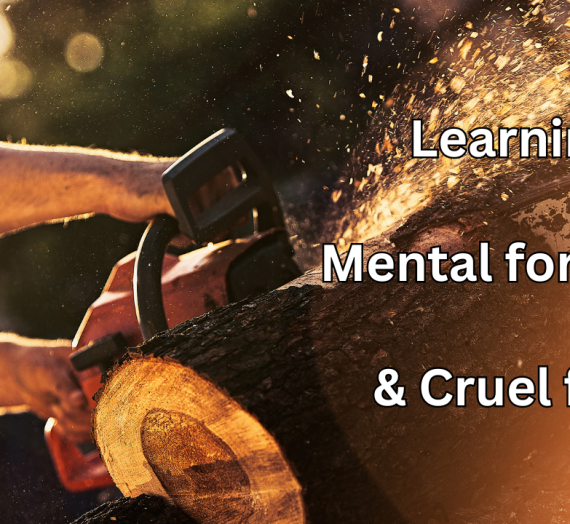How could a burn impact your character? What challenges might they face in burn prevention? What are the four types of burns? What is a fourth-degree burn? Find out on this episode.
Today we are going to talk about burns. Let me start by adding a disclaimer. I am, in no way, shape, form, or fashion, a doctor or medical person. This is not medical or treatment advice, and I am not telling you what to do or not to do. This is solely for the purpose of inspiring ideas for writing about burns in a fiction story and nothing else.
Now that that is out of the way, let’s get into this!
This week I will focus on burns, and next week I will focus on burn treatments. We have all dealt with burns at one time or another in our lives, and your characters will be the same. There are four types of burns: thermal burns, chemical burns, electric burns, and radiation burns.
Thermal burns are burns caused by contact with heated objects. They fall into one of six categories; scalds, thermal contact burns, electrical burns, chemical burns, radiation burns, and burns caused by fire. I know some of these have thier own categories however thermal burns are categorized, by how the person comes in contact with the heated object, and that can overlap into other categories.
Scolding involves things like boiling water, scorching bath water, and steam. I once dropped a pot of boiling tea on my hand and wrist. Nothing helped the pain for days, and it was only a first-degree burn. I do not recommend! Chemicals can sometimes cause burns when the chemicals are mixed together and generate heat. Electrical burns sometimes turn thermal when the body converts an electrical current going through it into heat. The other example is when electricity lights the clothes on fire. Burns by fire are fairly self-explanatory. Fire happened to the skin. Thermal contact burn is being burned by a hot object, a pot, a pan, a slide in the summer sun, a hot sidewalk, fireworks, or even a hot car buckle. From my understanding of my research, radiation of the thermal type is nuclear radiation. Basically, if the burn comes from something radioactive, it is classified as a thermal burn.
These are basically your common burns and will be treated accordingly. Just remember old wives’ tales like spreading mayo on a burn is not a medical treatment. When your character gets to the hospital, they have to scrap the mayo off the burn. That will hurt!
Chemical burns are when the skin comes in contact with a chemical for a period of time, resulting in skin damage. Some of the things that cause this can be but are not limited to gasoline, bleach, battery acid, household cleaners, teeth whitening products, hair dye, ammonia, pool cleaners, and more. I personally used an after-surgery mouthwash that chemically burned my mouth. It was painful and a bit confusing what was going on at first since I assumed it was pain from mouthwash touching a surgical site and later that all my mouth hurting was related to the surgery.
I was an oddity because chemical burns are normally known right away. Signs typically appear quickly but, in some cases, take time. I believe that depends on the type of chemical your character comes in contact with, so make sure to research the chemical itself. Signs of a chemical burn are redness, feeling as if the skin is burning, changes in vision if the chemical somehow got into the eyes, coughing or shortness of breath if the chemical was inhaled, numbness, redness, or sometimes even black skin at the contact site, looking like the skin is melting in an oozing kind of way when it is not actually melting but is forming blisters and more.
Chemical burns are treated by removing the clothing from the affected area or contacts if it comes in contact with the eyes. Remove any dry chemicals that remain. Rinse with cool water for 20 minutes. However, if it comes in contact with the eyes, they should be rinsed until they reach medical help. Although there are a few chemicals, I do not know which ones are not removed with water. That is why your character needs to know what chemicals they are working with and first aid if an accident happens. Knowing this could make a character a hero. Not knowing what to do could turn bad or potentially deadly. Also, jobs should train your characters, so there could be a story lawsuit for failure to properly train and someone being injured. Historically, your character might not have had all the info on what to do when chemically burned and might have to wing it.
Preventing these types of burns is always best. Training, proper safety gear, correct storage, content labels with a first aid label, well-ventilated areas, keeping chemicals away from children, never mixing chemicals, and common sense will save your characters from themselves. At least, we hope. Unless they are a jerk, and then storybook payback might ensue!
Electric burns are burns that happen because of electricity. The ways this can happen include through appliances, wiring, lighting, lightning, electronics, and more.
Electrical burns should be taken seriously because while there might be only a small sign of a burn outside, there could be internal damage. Signs of an electrical burn are burns (of course), confusion, headaches, dizziness, weakness, numbness, heart pounding or fluttering, tingling, heart arrhythmias, red or black urine, muscle contractions, balance problems, lightheadedness, shortness of breath, seizures, uncouthness, entrance wounds, exit wounds, arc wounds, and more.
How many volts they come in contact with and how the electricity went through the body will make a huge difference in how severe the burn is. Because of the possible unknown internal damage, doctors advise seeking medical attention to find the full extent of the injury. The “let’s be safe, not sorry,” approach.
Once again, prevention is always best. Different eras believed different things helped with this. I have a family member who used to work on electrical lines, and they used to carry a stick in their back pocket to help against electrical shocks. Some people say they believed it would shock the stick not them, while others swear it was for knocking people off the lines if they got shocked.
In case you are wondering what that means, when you have high voltage hit a human body, the muscles lock up. The person literally can’t let go. Using a stick to push them off keeps the second person from being shocked when they touch them.
Radiation burns are burns caused by short or long wavelengths. These happen with prolonged exposure. The most common of these is a sunburn. The signs and symptoms are basically the same as a thermal burn. The real difference between thermal burns and radiation burns is the time it takes for the burn to show up on the skin. Thermal burns show up right now. Radiation can take minutes to weeks to show up.
The next thing to know is that there are four degrees of burns. I did not know there were more than three, but hey, I learned something new.
First-degree burns are when the outer layer of the skin, called the epidermis, is burned. This is common with touching things like a stove, curling iron, or even a sunburn. They can be treated at home and will usually only be painful for 24 to 48 hours. Sometimes, as in the case of sunburns, the dead skin will peel away in a few days.
Second-degree burns are when a burn goes through the top layer of skin, called the epidermis, and down to the second layer of skin, called the dermis. This is actually the most common type of burn. It is painful, can blister and swell, and will be red or brown in color. These can scar and usually take one to three weeks to heal. Medical help is not normally needed, but your character will need it if the burn is over a large area, a joint that could affect their movement, or it shows any signs of infection. Remember, historically, infections kill.
Third-degree burns are when a burn goes through the outer layer of skin (the epidermis), through the middle layer of skin (the dermis), and the layer of fat under your skin (hypodermis.) This type of burn can also burn sweat glands, hair follicles, and, most importantly, nerves. When the nerves are burned, the burn will not hurt right away. However, this is deceptive and masks the seriousness of these types of burns.
Third-degree burns can look charred, dried, leathery, swollen and can have black, white, or bright red coloring. There can also be second-degree burns around the third-degree burn.
Fourth-degree burns get a little more complicated, as there are a lot of things that break this down even further into more degrees of burns, but I’m not going to because I’m not an expert. Instead, I will go with the burn definition from burnsurviver.com. They define it as “(full thickness burns) affect all layers of the skin and also structures below the skin, such as tendons, bone, ligaments, and muscles.”
Fourth-degree burns are traumatizing to the burn victim and anyone around them when it happens. They have their nerves burned off. Skin grafts are common. Infection is a high danger, especially in a historical or apocalyptic story. This is also the stage of life-threatening burns. Your character is likely to go into shock.
Shock is when there is a sudden drop in blood flow throughout the body. When this happens, the organs are not getting enough oxygen. The skin can be cool, clammy, pale, and/or ashen. Other signs might be rapid breathing, rapid pulse, enlarged pupils, nausea, vomiting, weakness, fatigue, dizziness, fainting, and more. There can be mental changes as well, such as changes to mental function, unnormal behavior, agitation, or intense anxiety. Shock has several stages but can potentially lead to death.
First aid for shock is to lay the character flat on their back, assuming that was not the burned part of the body, and elevate their feet. Keep the person still. The more they move, the less oxygen to the organs. Loosen any tight clothing. Cover them with a blanket to keep them from becoming chilled. Do not let them eat or drink anything. I’m not sure if the no eating and drinking one is what they want you to do for modern medical care in case they need emergency surgery or if it is important either way. Untreated infections can potentially turn septic and lead to death. This will happen faster if the bone is accessible to the infection through the burn.
Signs of a burn infection are
* Unusual redness around the burn.
* Feeling hot to the touch.
* Change in color to the burn.
* Purplish coloring.
* Sudden change in thickness to the burn.
* Green discharge.
* Foul smell.
* Fever.
The next thing to know is the rule-of-nine burn chart. This was made in 1947 and published in 1951. It is a chart that was created to help calculate the total amount of the body that was burned. The numbers are a little different for adults than they are for children. These are broken down in increments of nine. For example, the adult’s leg, including the feet, is broken down so that the front of the leg equals 9% and the back of the leg equals 9%. If both the front and the back were burned, you would add 9% + 9% to equal 18%.
The breakdown of body parts for the adult is as follows:
Torso: Front 9%, back 9%. Together = 18%
Pelvis: Front 9%, back 9%. Together = 18%
The head and neck: front 4.5%, back 4.5%. Together 9%
Arm and hand: front 4.5%, back 4.5%. Together 9%
Genitalia: 1%
Leg and foot: Front 9%, back 9%. Together = 18%
For children, it is a bit different. A child’s head is larger at birth. As such, it makes 18% of the body’s total. Starting at one, things change as the baby grows. For each year over one-year-old, 1% should be subtracted from the head up to nine years old. The head of children ages ten and up should be calculated at 9%. Of those same numbers, 0.5% should be added to each leg for each year up to nine years old.
That means for newborns and children one and under
Torso: Front 18%. Back 18%. Together = 36%
Head and neck: Front 9%. Back 9%. Together= 18%
Leg and foot: Front 7%. Back 7%. Together 14%
Arm and hand: Front 4.5%. Back 4.5%. Total 9%
I will leave a link in the show notes where you can find the chart.
Fun Fact: It is estimated that approximately 8,500 people in the USA were injured with fireworks in the year 2021. These can be thermal or chemical burns, but thermal is the most common.
What could possibly go wrong:
Likely to go wrong: Your character had no training, and when someone burns themself with a chemical, they do not know how to help the burn victim.
Likely to go wrong: Your character spent too long in the sun and got a sunburn. If writing historically, there will be no sunscreen as we know it today, and the same could be true in an apocalyptic story.
Possible to go wrong: Your character was carrying a pot or pan and accidentally burned themself. When they do, they instinctively pull their hand back, dropping the pot or pan. This will make a mess, and if it is hot, there could be a second burn if it splashes back on them.
Possible to go wrong: Your character was working on electrical wires, and when they were shocked, they didn’t realize how badly they were injured. It might take a second character to tell them their behavior is not what it should be and to seek medical help for them.
Unlikely to go wrong: Your character lit gas fumes on fire and breathed in some of the fumes just as there was a flash fire, which burned their lungs.
Unlikely to go wrong: Your character’s burn becomes infected, and they do not realize it until they start to smell it. The stench could be very potent.
Improbable, but still technically within the realm of possibilities: Your character survives a nuclear blast, only to find they have burns many days after the initial blast.
Improbable, but still technically within the realm of possibilities: Your character pops the blister of a second-degree burn. This lets bacteria inside the wound, and soon they have a full-blown infection that turns septic, and they die.
Helpful Links to Learn More:
Burns:
https://stanfordhealthcare.org/medical-conditions/skin-hair-and-nails/burns/types.html
Video:
Types of burns:
https://www.healthline.com/health/chemical-burn-or-reaction#types
https://burncenters.com/burns/burn-services/thermal-burns/
https://burncenters.com/burns/burn-services/electrical-burns/
https://burncenters.com/burns/burn-services/radiation-burns/
https://burncenters.com/community/what-is-the-rule-of-nines-and-how-can-it-be-applied-in-burn-care/
https://www.uchealth.org/diseases-conditions/electrical-burns/



